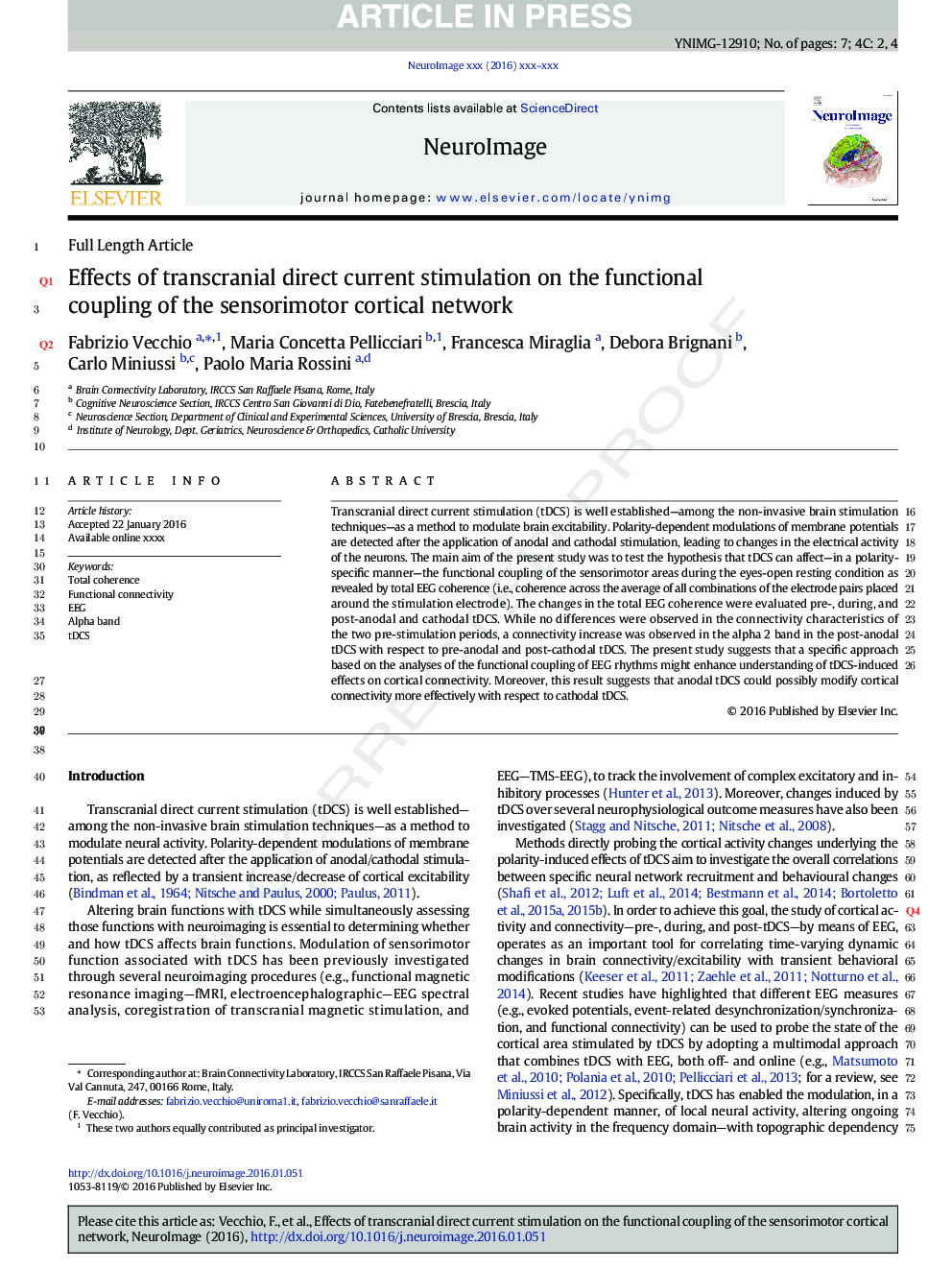| Article ID | Journal | Published Year | Pages | File Type |
|---|---|---|---|---|
| 6023176 | NeuroImage | 2016 | 7 Pages |
Abstract
Transcranial direct current stimulation (tDCS) is well established-among the non-invasive brain stimulation techniques-as a method to modulate brain excitability. Polarity-dependent modulations of membrane potentials are detected after the application of anodal and cathodal stimulation, leading to changes in the electrical activity of the neurons. The main aim of the present study was to test the hypothesis that tDCS can affect-in a polarity-specific manner-the functional coupling of the sensorimotor areas during the eyes-open resting condition as revealed by total EEG coherence (i.e., coherence across the average of all combinations of the electrode pairs placed around the stimulation electrode). The changes in the total EEG coherence were evaluated pre-, during, and post-anodal and cathodal tDCS. While no differences were observed in the connectivity characteristics of the two pre-stimulation periods, a connectivity increase was observed in the alpha 2 band in the post-anodal tDCS with respect to pre-anodal and post-cathodal tDCS. The present study suggests that a specific approach based on the analyses of the functional coupling of EEG rhythms might enhance understanding of tDCS-induced effects on cortical connectivity. Moreover, this result suggests that anodal tDCS could possibly modify cortical connectivity more effectively with respect to cathodal tDCS.
Related Topics
Life Sciences
Neuroscience
Cognitive Neuroscience
Authors
Fabrizio Vecchio, Maria Concetta Pellicciari, Francesca Miraglia, Debora Brignani, Carlo Miniussi, Paolo Maria Rossini,
